ETI 049 | Racquet Rebound Potential
How tight, or loose should your grip be? Common sense suggests tight. This experiment, done by real “tennis scientists” confounds the issue. Enjoy
ETI 048 | 8 Board on Court
Lagging A dog wagging it’s tail Centered Balanced Simple but deceptively difficult
ETI 047 | Will Staying Sideways help you hit up on the serve!
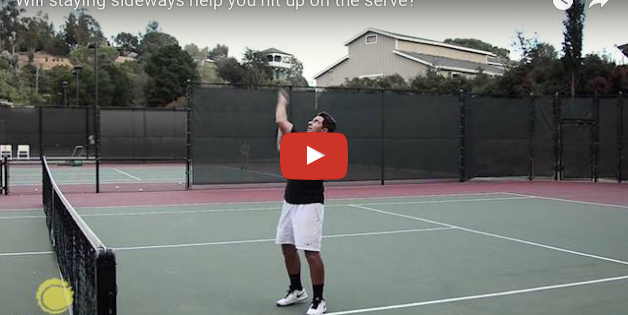
The common problem I see at the club, as well as on television, is where the server flexes at the waist at the hit – more or less jackknifing to create a little more ball speed.
And this action creates both forward and downward forces – and is generally associated with netted serves.
Overhand Throwing – a Template for the Serve
Habits, Injuries, Resistance to Change – and Overhand Throwing Technique Todd Ellenbecker, “Tennis teaching professionals can identify players of all ability levels, even high level players, who have less than optimal biomechanics on their serve. Often … their throwing mechanics also are less than optimal and have many similar characteristic patterns. Some of the same inherent…
ETI 046 | Gravity Motion
Agility = moving quickly and easily. We know when we are gliding, we know when we are moving heavily. Equally, when can see on the adjacent court who moves well and who does not. But often more than strength training or explosive movement, the secret can be in a subtle unweighting where the body leads…
ETI 045 | Sidespin Serve
Pete Sampras, “I won 7 Wimbledon titles because I had the best second serve in the game.”
The second serve is about spin that will make the ball curve down as it crosses the net. Yes it may corner the opponent and either swing them wide and out of court, or kick up into their backhand.
ETI 044 l Topspin and the Racquet Drop
Consider the critical 24 inch hitting zone when creating topspin on a forehand or on a serve – to create this spin the racquet must be swung up from beneath the ball (12 inches) but carry upward after impact (another 12 inches) to create the rolling spin that more and more of us want in…
ETI 043 | Point of Contact Area of Contact
Ball control – ours is a game of accuracy, of consistency, but equally it is a game of timing for the opponent will send us shots of varying spin, speed, length and difficulty. Timing describes the relation between the incoming ball and the swinging racquet – and certainly the entire game revolves around the moment…
ETI 042 | Measure Twice Cut Once
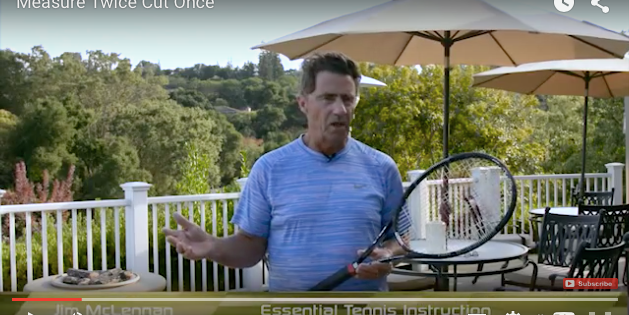
https://dg2e30wx7kvei.cloudfront.net/eti_podcast/ETI_042_Measure_Twice_Cut_Once.mp4 The carpenter measures twice to cut once, to make sure the cut is accurate, for if too much is cut off that mistake cannot be undone. In tennis consider measuring as preparing first to the side for the incoming ball, but then to measure precisely the height of the backswing such that the racquet…
The Classic Duel – Serve vs. Return – Deconstructing Djokovic
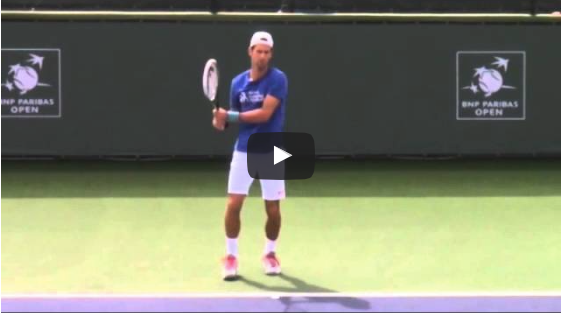
The full context of this is article is written up on the original post.
ETI 041 | Quantum Tennis/Golf
Many interesting parallels have been drawn between the tennis serve and the golf swing. Once the tennis player (or golfer) gets the feel for the mechanical elements of the serve (or golf swing) then rhythm becomes the overriding issue. Does the swing build smoothly and gracefully? Is there economy of effort? Can the server (golfer) swing easily yet hit hard? Are the body parts coordinated so that the force from the legs moves to the hips, and then to the torso, and then to the shoulder, then the arm, then the forearm, then the hand, and finally the fingers?
ETI 040 | The “X” Factor
Rotational body power But, is there a way to separate the hips from the shoulders as one winds up or unwinds The “X” Factor shows how to get a little more stretch and release
ETI 039 | Improvise (when necessary) on the tennis court
A few years ago I was encouraged to take a class in improvisational theater. It took me months to find the courage (stage fright and more) but I finally enrolled and then thoroughly enjoyed this class within the Stanford continuing studies program.
ETI 038 | Dead Hands
The 3 R’s of tennis – ready, read (where the ball is going) react!
As to your reaction – what precisely is your first move? What moves first, what initiates your preparation?
Really an important question.
ETI 037 | The Art of Winning
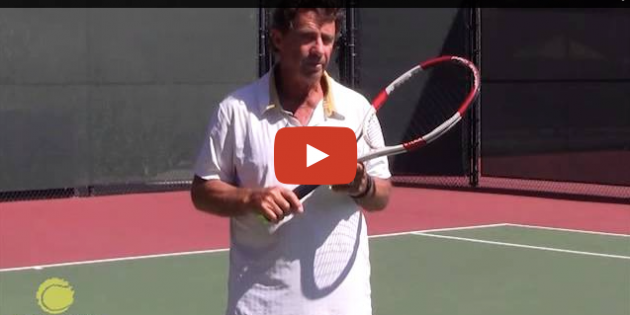
80% of the points in professional end with an error, 20% with a winner.
As regards unforced errors, if your opponent never misses and is patient as the day is long, would you consider missing a routine forehand in the 12th shot of a rally a forced or unforced error.
I am now believing that errors are simply errors, and the distinction is unnecessary.
ETI 036 | Spin – Changing Two Things at Once
Three factors control your tennis shot – not your feet, not your eyes, not your balance (though all of those do help) but the only three elements are; Angle of the racquet face, Swing Path and Tempo.
ETI 035 | The Dead Spot on the Racquet Face
Swing path, type of spin, power, 3d playback (with Zepp) but perhaps the most interesting as well as the most useful is the data that shows where you make contact on the racquet face.
And before going further, one of the most important (IF NOT THE MOST IMPORTANT) skills in the game of tennis is concentration, focus, and closely and continually watching the ball.
ETI 033 | Throwing vs. the Pendulum
Consider the elements in a strong and fluid overhand throw – and how the actions of the hand and elbow can be used or even copied in the modern forehand as well as certainly the serve.
Once when racquets were heavy and wooden, we could see (and still see now and then) a type of pendulum swing – back and forth with little whip or acceleration. Interestingly McEnroe still uses such a forehand to truly devastating effect.
ETI 032 | Attitude – the Space between Stimulus and Response
An excellent book, Man”s Search for Meaning, written by Victor Frankl, serves as a useful guidepost in living but equally when playing on court.
When Andy Murray hooked up with Ivan Lendl to capture his two grand slam titles, he was working at the same time with a sports psychologist (the same one who had worked with Lendl years before) to improve his attitude – to improve his emotional responses to the challenges he faced (and still faces) on court.
ETI 031 | Building Self Confidence
One of Northern California’s legendary teachers, as well as a dear friend and mentor to me, Fred Earle penned the following 5 keys – that he expected his players to answer with a resounding yes, each and every day at the end of practice or a game.
ETI 030 | Forward Spin
Squaring up – Hitting the ball true – precise contact on the back of the ball.
We all know about topspin – but have you ever tried to strike the ball with true topspin – where the ball rolls forward – precisely forward?
The following drop hit drill will improve your time spent practicing on court – and help you with your forehand and or your backhand.
ETI 029 | Tap Tap Tap
Balance, holding your finish, placing your weight precisely against the ball.
Yes there are many ways to hit the ball, and many ways to play this game, but with all the variety of styles and technique – our best professionals are balanced more often than perhaps we readily notice.
ETI 028 | Scan and Zoom
Is there more to it than simply watching the ball?
Well, the answer is yes. But the answer is not readily apparent.
Scan and zoom describes two different visual orientations, both of which occur on court.
In your own game, are you better at scanning or zooming? Better yet, are you skilled at both?
McEnroe, Courier and Sampras

Power Shares Champions Shootout. Great event. Let me repeat – great event. The format is brief, two one set semifinal singles followed by a one set final between the two semi winners. In this case Mac played Courier, Sampras played Blake – and then in the final the younger man beat the oldest man…
5 Keys to Playing (and competing against) the Pusher
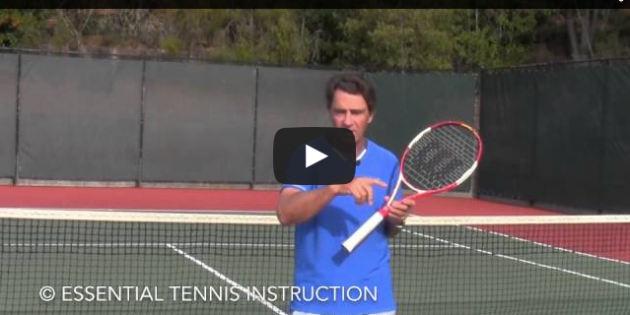
Every club has one of these, a player who moves very well, makes darn few errors, often hits the ball softly or with unusual form, but over and over again this is a player who wins, and more than that this is a player that most dread. The term “pusher” is somehow derogatory, implying that…

Recent Comments